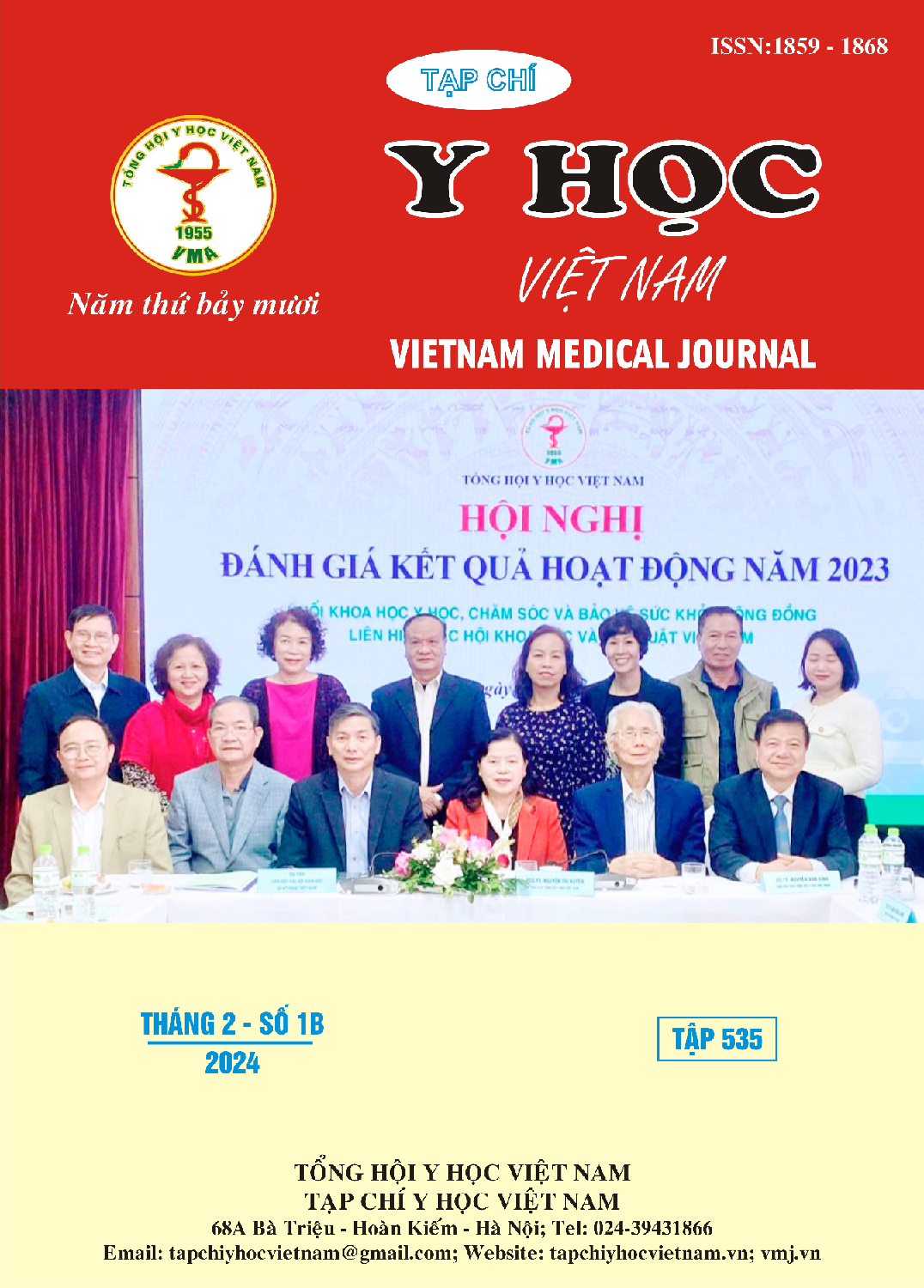STUDY ON ANATOMICAL VARIATIONS IN FISSURES OF LUNG BY CT SCAN IN VIETNAMESE ADULTS
Main Article Content
Abstract
Objectives: This study aims to describe the patterns of interlobar fissures in mature individuals through computed tomography and investigate the relationship between these fissure patterns, gender, and bilateral lung location. Methods: This is a retrospective cross-sectional study. All patients were Vietnamese individuals, aged ≥ 18, who underwent chest computed tomography with or without contrast enhancement at the Department of Diagnostic Imaging, Nguyen Trai Hospital, from November 2022 to July 2023. Results: The study encompassed 300 cases by computed tomography. The average age of the study group was 50.61±13.51 years. Gender distribution was nearly equal (50.67% male and 49.33% female). Among these cases, 199 variations of interlobar fissures were identified on CT scans, accounting for approximately 66.33%, with incomplete major interlobar fissures being the most prevalent at 44.67%. In all 300 cases, right horizontal fissures were consistently observed, while left oblique and right oblique fissures were detected in 99% and 98.33%, respectively. Utilizing Craig and Walker's classification, type I of the major interlobar fissure was the predominant classification, accounting for 81.67% or more, followed by types II, III, and IV. The prevalence of variations in the right lung exceeded those in the left, except for the left inferior accessory fissure, which surpassed its counterpart on the right. No significant gender differences were noted in the variations of major and right interlobar fissures (p>0.05). Among the variations in the left interlobar fissures, only the incomplete left oblique fissure was statistically significantly higher in males (35 cases, 11.67%) compared to females (13 cases, 4.33%) (p<0.05). Conclusion: Anatomical characteristics of interlobar fissures on computed tomography provide clinicians with a comprehensive understanding of lung lobe anatomy, aiming to reduce risks and complications during and after surgery.
Article Details
Keywords
anatomy, major interlobar fissure, accessory fissure, computed tomography.
References
2. Aziz A, Ashizawa K Fau - Nagaoki K, Nagaoki K Fau - Hayashi K, Hayashi K. High resolution CT anatomy of the pulmonary fissures. Journal of Thoracic Imaging. 2004;19(3):186–91.
3. Bayter PA, Lee GM, Grage RA, Walker CM, Suster DI, Greene RE, et al. Accessory and Incomplete Lung Fissures: Clinical and Histopathologic Implications. J Thorac Imaging. 2021;36(4):197–207.
4. Craig SR, Walker WS. A proposed anatomical classification of the pulmonary fissures. J R Coll Surg Edinb. 1997;42(4):233–4.
5. Cronin P, Gross Bh Fau - Kelly AM, Kelly Am Fau - Patel S, Patel S Fau - Kazerooni EA, Kazerooni Ea Fau - Carlos RC, Carlos RC. Normal and accessory fissures of the lung: evaluation with contiguous volumetric thin-section multidetector CT. Eur J Radiol. 2010;75(2):e1-8.
6. Heřmanová Z, Ctvrtlík F, Heřman M. Incomplete and accessory fissures of the lung evaluated by high-resolution computed tomography. Eur J Radiol. 2012;83(3):595–9.
7. Jeong Ah Hwang YTK, Sung Shick Jou. Inferior Accessory Fissure on Multi-Detector CT Image. J Korean Soc Radiol. 2012;67(1):29-36.
8. Joshi A, Mittal P, Rai AM, Verma R, Bhandari B, Razdan S. Variations in Pulmonary Fissure: A Source of Collateral Ventilation and Its Clinical Significance. Cureus. 2022;14(3):e23121.
9. Manjunath M, Sharma MV, Janso K, John PK, Anupama N, Harsha DS. Study on Anatomical Variations in Fissures of Lung by CT Scan. Indian J Radiol Imaging. 2022;31(4):797-804.
10. Moiz N, Khakwani S, Asad Ullah M, Azmat U, Shahwar DE, Hyder SMS. Anatomical Variations in Pulmonary Fissures on Computed Tomography


